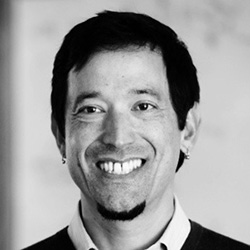Climate change is increasing temperatures, and power use, globally; utilities must implement programs to alleviate strain on the power grid.
Climate change is driving extreme weather around the world, including major heatwaves with record-breaking temperatures. In fact, during July, the average global temperature surpassed all previous records for a number of days, breaking them four times in a row. The Arizona State Climate Office reports that in July 2023, Phoenix had the hottest month on record for a U.S. city, with an average temperature of 102.7°F.
As the temperature rises, so does the need for power, with air conditioning being a primary factor. This soaring energy demand pushes the aging power grid to its breaking point, and it frequently struggles to keep up. The result of the power grid being pushed beyond its capabilities tends to be blackouts or brownouts. Losing power and air conditioning during periods of high heat can be dangerous, especially for the most vulnerable. As the summertime continues to get hotter, utilities need to ensure that the power grid and energy supply can keep up with the growing demand. In order to do this, utilities can turn to things like demand response programs, grid-edge intelligence and distributed energy resources (DER).
Demand response (DR) programs are more important now than ever. These programs encourage consumers to reduce their electricity demand during times of peak usage, reducing the strain on the grid. DR programs are not new. Indeed, various forms of DR programs have been used by utilities for peak load management since the 1990s. However, DR programs remain a critical tool for grid operators to help maintain grid reliability, particularly during extreme weather events driven by a rapidly changing climate.
Technologies and protocols, like smart thermostats and Open Automated Demand Response (OpenADR), make it possible to implement DR in new and interesting ways. For example, smart thermostats can be programmed to automatically raise the temperature of a home or business when electricity demand is low, and lower the temperature when demand is high. This can help reduce electricity consumption during peak hours without much impact on customer comfort.
OpenADR is a protocol that allows different devices and systems to communicate with each other to coordinate DR events. This process consists of fully automated signals that direct devices powered by electricity to turn off or throttle back their operations during high demand. This can help to ensure that DR is implemented in a way that minimizes the impact on customers and the grid, working to prevent power outages and blackouts.
Smart thermostats and OpenADR are just two examples of the many new technologies that can be used to implement DR in more efficient and effective ways. By leveraging these and other DR tools, utilities can help ensure that the power grid can keep up with the growing demand for electricity, even during extreme weather events.

Metering and communications technology have now evolved to a point where smart meters can essentially act as grid sensors “at the edge” of the electric distribution network – providing visibility into low- and medium-voltage network operations and performance in ways never before possible. This added level of operational visibility into the distribution network is essential for maintaining and supporting the power grid, particularly as the aging infrastructure struggles to keep up with increasing demand and extreme weather events.
This grid-edge intelligence enables utilities to conduct a range of activities, from locationally targeting congested distribution circuits for upgrades to dynamically responding to critical conditions that could lead to outages. For example, grid-edge intelligence can be used to identify and isolate secondary transformers exposed to repeated overload conditions and proactively replace or upgrade those transformers – preventing outages and improving reliability.
This greater level of insight allows DR programs to play an even broader role in grid and climate resilience. For example, grid-edge intelligence can be used to target DR programs to specific areas experiencing high demand and localized congestion. This can help reduce the strain on the grid and prevent blackouts, while minimizing utility expenditures on infrastructure upgrades.
In this sense, grid-edge intelligence is a critical tool for utilities as they work to modernize the grid and meet the challenges of the 21st century.
As climate change continues to intensify and heat up the world, steps must be taken to prepare for the inevitable increase in power demand. This necessarily includes expanding DR programs and capabilities through grid-edge intelligence and distributed energy resources—which, when leveraged in tandem, have the ability to revolutionize DR, creating a more resilient, sustainable and affordable electric grid. By combining these technologies, a new era begins, with flexible loads and DERs providing real-time response to changing grid conditions. This powerful tool not only ensures grid resiliency but also enables clean renewable generation, supports electric vehicles and building electrification, and helps keep electricity rates low for customers. Adopting DR programs to keep the power on during heatwaves must be a priority for utilities, especially as outages can negatively impact our most vulnerable.

Mike Ting is a senior product manager in Itron’s distributed energy management team, overseeing Itron’s strategies and product roadmaps related to DER management solutions that leverage its networks and distributed intelligence technologies. Prior to his product management role, Ting spent 20+ years in public and private sector research and consulting to utilities, government agencies and other stakeholders related to energy efficiency, demand response and energy policy, including stops at the International Energy Agency and Lawrence Berkeley National Laboratory.
Scott Ellyson, CEO of East West Manufacturing, brings decades of global manufacturing and supply chain leadership to the conversation. In this episode, he shares practical insights on scaling operations, navigating complexity, and building resilient manufacturing networks in an increasingly connected world.